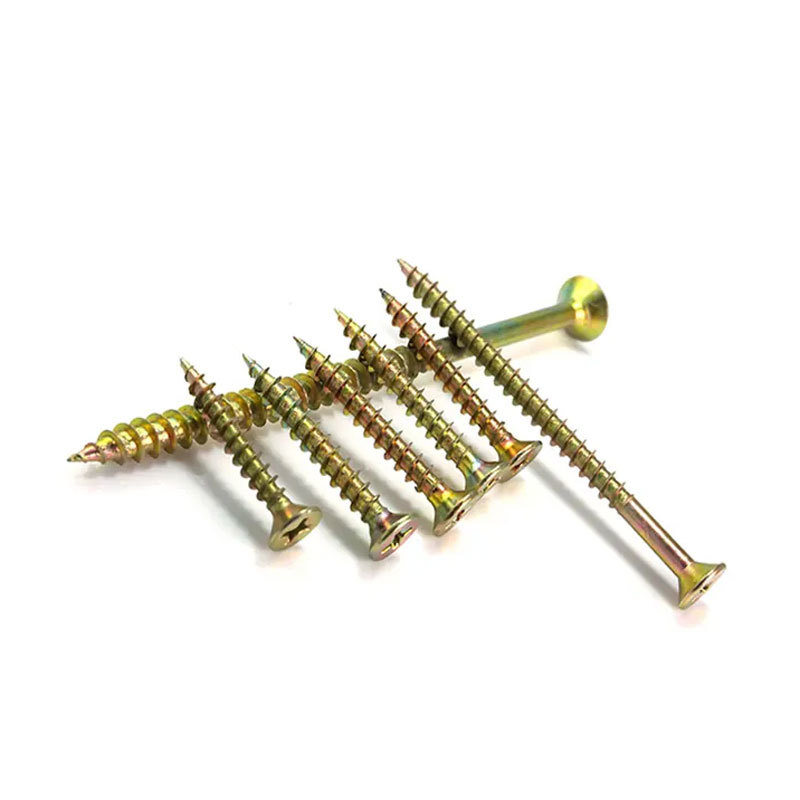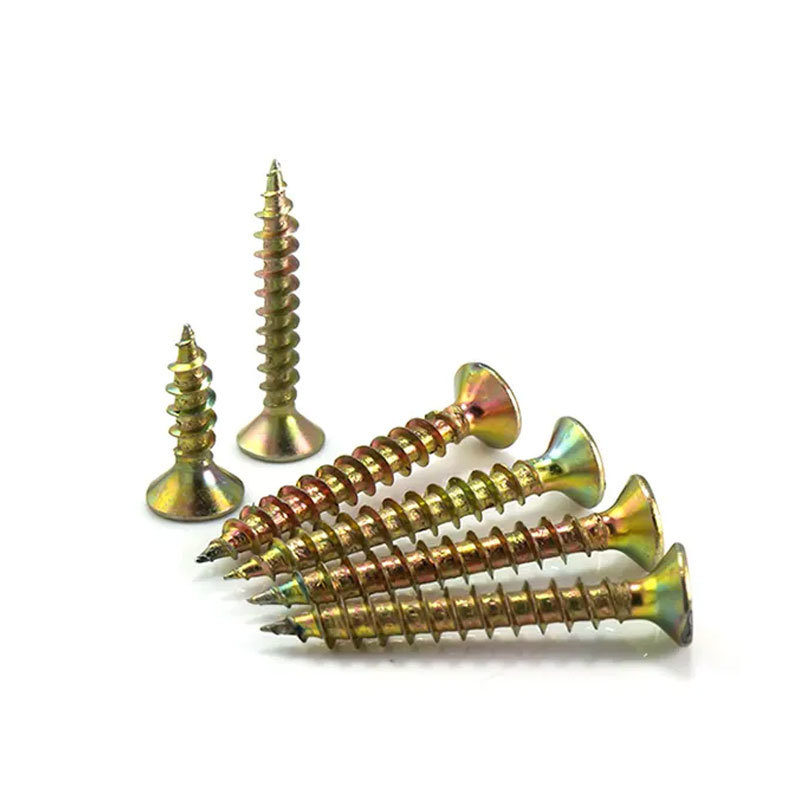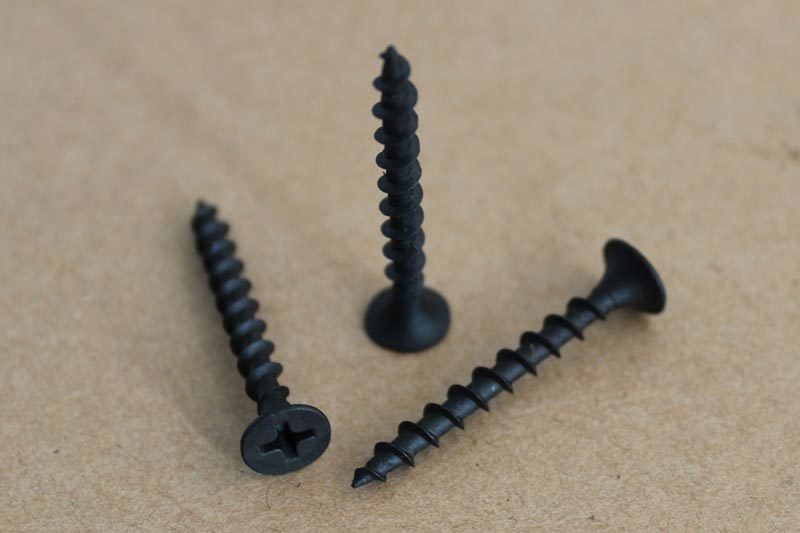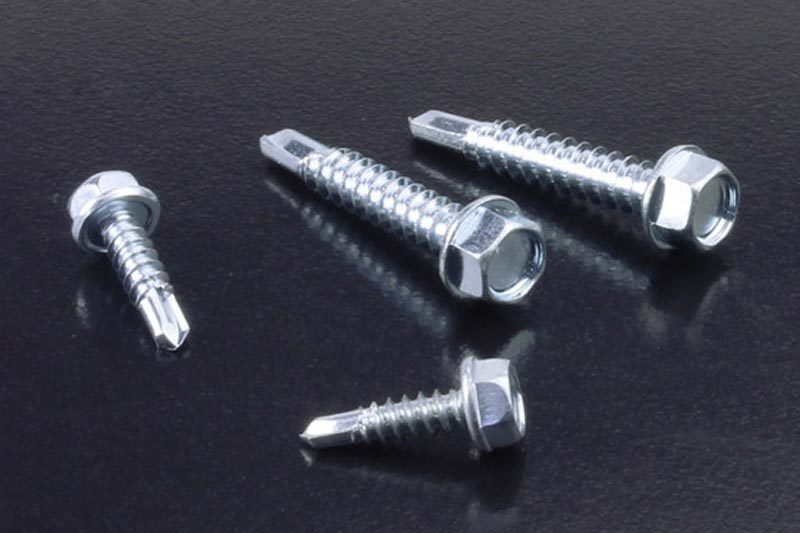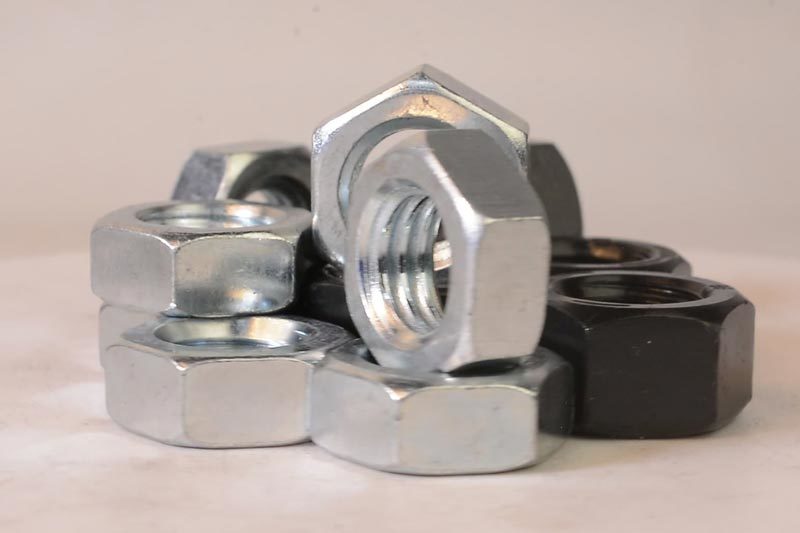Why Countersunk Head Chipboard Screws Are Ideal for Your Projects
Release Time:
Apr 26,2025
Why Countersunk Head Chipboard Screws Are Ideal for Your Projects Countersunk head chipboard screws are an essential component in the construction, woodworking, and furniture assembly industries. Their unique design and features make them highly effective for a wide range of applications. In this article, we will delve into the numerous benefits of using countersunk head chipboard screws, their ap

Why Countersunk Head Chipboard Screws Are Ideal for Your Projects
Countersunk head chipboard screws are an essential component in the construction, woodworking, and furniture assembly industries. Their unique design and features make them highly effective for a wide range of applications. In this article, we will delve into the numerous benefits of using countersunk head chipboard screws, their applications, and why they should be your go-to choice for any project that requires stability and aesthetic appeal.
Table of Contents
- 1. Introduction to Countersunk Head Chipboard Screws
- 2. What Are Countersunk Head Chipboard Screws?
- 3. Benefits of Using Countersunk Head Chipboard Screws
- 4. Applications of Countersunk Head Chipboard Screws
- 5. Material and Design Considerations
- 6. Installation Tips for Countersunk Head Chipboard Screws
- 7. Common Issues and Solutions
- 8. FAQs About Countersunk Head Chipboard Screws
- 9. Conclusion
1. Introduction to Countersunk Head Chipboard Screws
When it comes to fastening materials, the choice of screws can significantly impact the overall quality and durability of a project. **Countersunk head chipboard screws** are designed with a flat head that allows them to sit flush with the surface of the material being fastened. This flush finish not only enhances the aesthetic appeal of the project but also reduces the risk of snagging or injury. Understanding the advantages offered by these screws can lead to better project outcomes and increased efficiency.
2. What Are Countersunk Head Chipboard Screws?
Countersunk head chipboard screws are specifically engineered for use with chipboard and related materials. Their **countersunk head design** allows the screw to sink below the surface, providing a clean finish. This type of screw typically features a coarse thread for better grip in softer materials like chipboard, MDF, and particle board. Made from high-quality steel or other durable materials, these screws are available in various lengths and diameters to accommodate different project needs.
3. Benefits of Using Countersunk Head Chipboard Screws
3.1 Aesthetic Appeal
The most notable advantage of countersunk head chipboard screws is their aesthetic appeal. By sinking into the material, these screws create a smooth surface that enhances the overall look of the finished project. This is particularly important in furniture design, where visible fasteners can detract from the visual quality.
3.2 Improved Stability
Another key benefit is their ability to provide improved stability. The flush finish prevents the screw from protruding, reducing the risk of damage or wear over time. This stability is crucial for ensuring the longevity of your projects and maintaining structural integrity.
3.3 Increased Load-Bearing Capacity
Countersunk head chipboard screws are designed to handle significant loads, making them ideal for heavy-duty applications. Their coarse threads allow for a secure grip in softer materials, ensuring that the screws hold firmly in place even under pressure.
3.4 Versatility
These screws are versatile enough for a wide range of applications, including woodworking, cabinetry, and furniture assembly. Their ability to work with various materials, such as chipboard, plywood, and MDF, makes them a favorite among builders and DIY enthusiasts alike.
4. Applications of Countersunk Head Chipboard Screws
4.1 Furniture Assembly
One of the most common applications for countersunk head chipboard screws is in furniture assembly. These screws allow for a clean finish on tabletops, cabinets, and shelves, ensuring that the hardware remains hidden and maintaining the design's aesthetic integrity.
4.2 Cabinetry and Joinery
In cabinetry, these screws are frequently used for joining pieces of chipboard or MDF. Their strength and flush finish make them ideal for creating seamless joints that can withstand daily use.
4.3 Flooring Installation
Countersunk head chipboard screws are also used in flooring installation, particularly with chipboard subfloors. Their ability to provide a secure hold ensures that flooring materials remain firmly in place, reducing the risk of squeaks and movement over time.
5. Material and Design Considerations
5.1 Material Types
Countersunk head chipboard screws are typically made from high-grade steel, often treated for corrosion resistance. Depending on the project requirements, you may also find screws made from stainless steel or brass for specific aesthetics or environmental conditions.
5.2 Thread Design
The thread design of these screws is crucial for their performance. Coarse threads provide better grip in soft materials, while fine threads may be used for harder materials. Understanding the right thread type for your application can enhance the effectiveness of your fastening.
6. Installation Tips for Countersunk Head Chipboard Screws
6.1 Pre-Drilling
Before installing countersunk head chipboard screws, it is advisable to pre-drill holes in the material. This helps prevent splitting and ensures that the screws drive in smoothly, providing a secure hold.
6.2 Using a Screwdriver or Drill
Using an appropriate screwdriver or drill is essential for achieving the desired flush finish. A power drill with a clutch setting can help control the depth, ensuring that the head of the screw sits perfectly flush with the surface.
6.3 Checking for Alignment
Proper alignment is crucial when inserting these screws. Misalignment can lead to uneven finishes and compromised structural integrity. Take the time to ensure that each screw is inserted straight and at the correct angle.
7. Common Issues and Solutions
7.1 Stripped Heads
Stripped screw heads can be a frustrating issue. To prevent this, ensure you are using the correct screwdriver size and type. If a screw head becomes stripped, a rubber band can sometimes provide the grip needed to remove it.
7.2 Material Splitting
Material splitting can occur if screws are driven in too forcefully. Always pre-drill holes, and use a lower torque setting on your drill to minimize the risk of splitting the chipboard.
7.3 Inconsistent Depth
Inconsistent screw depth can affect the aesthetic quality of your work. Using a depth gauge on your power drill can help maintain uniformity across your project.
8. FAQs About Countersunk Head Chipboard Screws
8.1 What materials can I use countersunk head chipboard screws with?
Countersunk head chipboard screws are designed primarily for use with chipboard, MDF, and particle board, but they can also be used with plywood and some hardwoods.
8.2 Are there different sizes of countersunk head chipboard screws?
Yes, they come in various lengths and diameters to suit different project needs. It’s crucial to select the appropriate size for your application.
8.3 Can I use these screws outdoors?
While some countersunk head chipboard screws are treated for corrosion resistance, it's best to choose stainless steel options for outdoor applications to ensure durability against the elements.
8.4 How do I know if I need to pre-drill?
Pre-drilling is advisable when working with softer materials or when using longer screws. If you notice splitting while driving screws, consider pre-drilling for future projects.
8.5 What is the difference between coarse and fine threads?
Coarse threads provide better holding power in soft materials, while fine threads are suited for denser materials, offering a tighter grip.
9. Conclusion
Countersunk head chipboard screws are a versatile and essential choice for anyone working with chipboard and similar materials. Their unique design not only enhances the aesthetic appeal of your projects but also ensures stability and longevity. By understanding their benefits and applications, along with proper installation techniques, you can significantly improve the quality of your woodworking and construction endeavors. Whether you are a professional craftsman or a DIY enthusiast, incorporating countersunk head chipboard screws into your toolkit will undoubtedly elevate the standard of your work.
Key words:
News Hotspot















